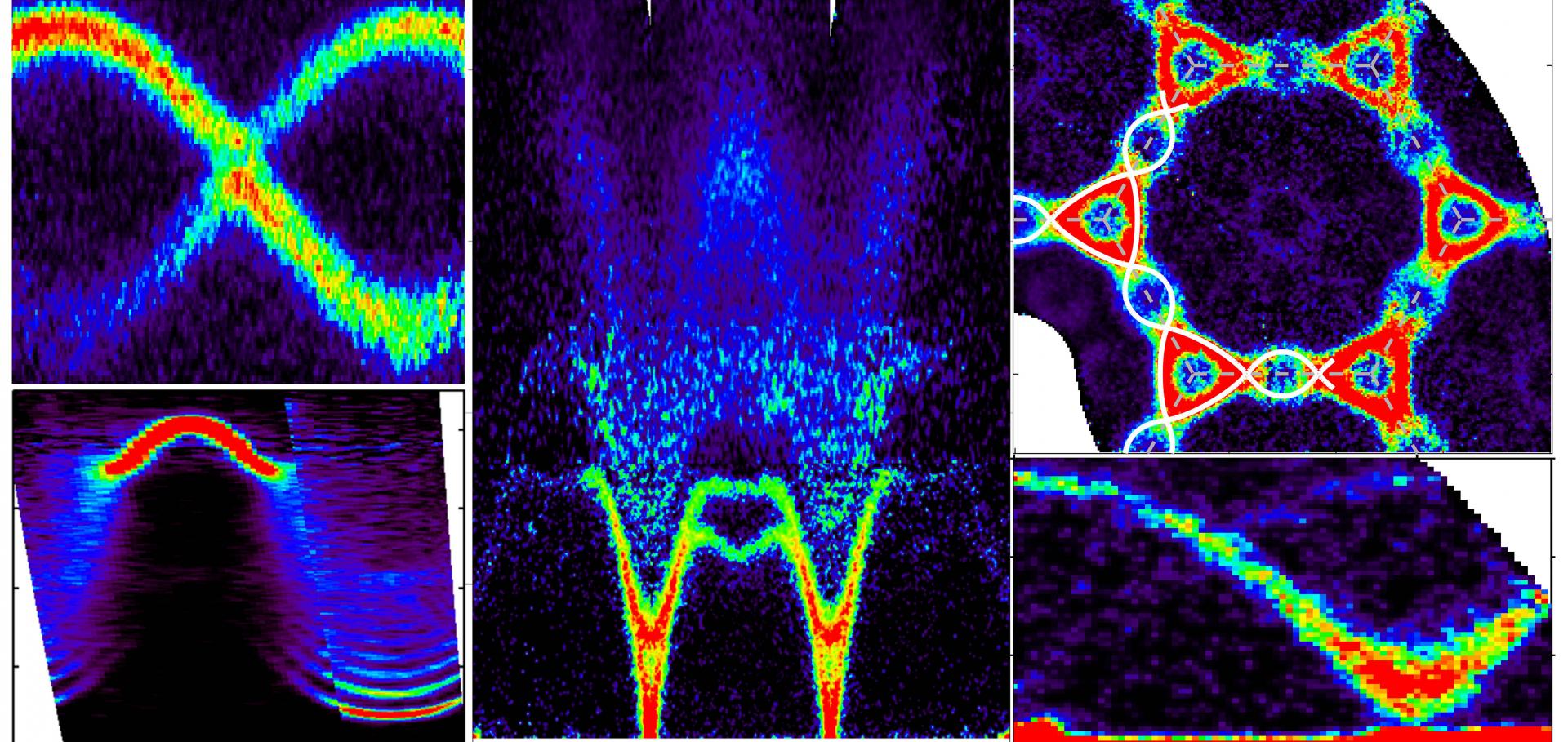Evidence for decay of spin-waves above the pseudogap in underdoped YBa2Cu3O6.35
(2007)
Evidence for decay of spin-waves above the pseudogap in underdoped YBa2Cu3O6.35
ArXiv 0704.2739 (2007)
Abstract:
The magnetic spectrum at high-energies in heavily underdoped YBa$_{2}$Cu$_{3}$O$_{6.35}$ (T$_{c}$=18 K) has been determined throughout the Brillouin zone. At low-energy the scattering forms a cone of spin excitations emanating from the antiferromagnetic (0.5, 0.5) wave vector with an acoustic velocity similar to that of insulating cuprates. At high energy transfers, below the maximum energy of 270 meV at (0.5, 0), we observe zone boundary dispersion much larger and spectral weight loss more extensive than in insulating antiferromagnets. Moreover we report phenomena not found in insulators, an overall lowering of the zone-boundary energies and a large damping of $\sim$ 100 meV of the spin excitations at high-energies. The energy above which the damping occurs coincides approximately with the gap determined from transport measurements. We propose that as the energy is raised the spin excitations encounter an extra channel of decay into particle-hole pairs of a continuum that we associate with the pseudogap.Quantum phase transitions in magnetism and superconductivity: emergent spin topology seen with neutrons
(2007)
Quantum phase transitions in magnetism and superconductivity: emergent spin topology seen with neutrons
ArXiv cond-mat/0702062 (2007)
Abstract:
Magnetic spins and charges interact strongly in high-temperature superconductors. New physics emerges as layers of copper oxide are tuned towards the boundary of the superconducting phase. As the pseudogap increases the characteristic spin excitation energy decreases. We show that our well-annealed YBa2Cu3O6+x (YBCO6+x) single crystals are orthorhombic and superconducting but not antiferromagnetically ordered. Near the critical concentration for superconductivity for x = 0.35 the spins fluctuate on two energy scales, one a relaxational spin response at ~2 meV and the other a slow central mode that is resolution-limited in energy (<0.08 meV) but broad in momentum. The gradual formation on cooling of a central mode over a range of momenta suggests that the spin ground state from which coherent superconducting pairing emerges may be quantum disordered. We show that YBCO6.35 adopts a homogeneous state that consists of highly-organized frozen sub-critical three-dimensional spin correlations. The continuous spin evolution indicates that a single quantum state occurs in contrast to claims from site-based probes that lightly doped YBCO undergoes a transition to antiferromagnetic Bragg order followed by a sharp transition to a cluster glass phase. For x = 0.35, where Tc = 18 K is reduced to 1/5 of Tcmax, the spin ground state is reached without a sharp transition and consists of short correlations extending over only 8 Angstrom between cells and 42 Angstrom within the planes. Polarized neutrons show the angular spin distribution to be isotropic unlike the AF insulator. Since moment is conserved we interpret this as evidence for hole-induced spin rotations rather than decay.Radu et al. Reply
Physical Review Letters 98:3 (2007)


